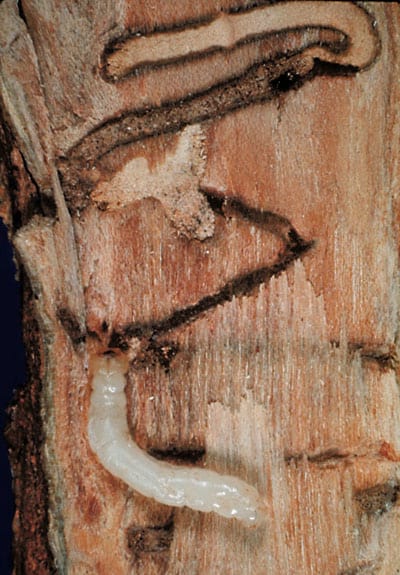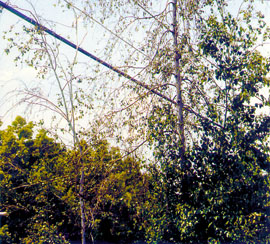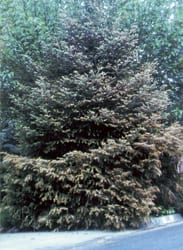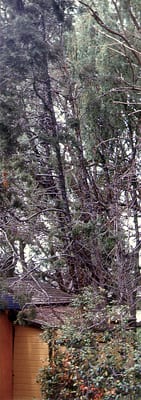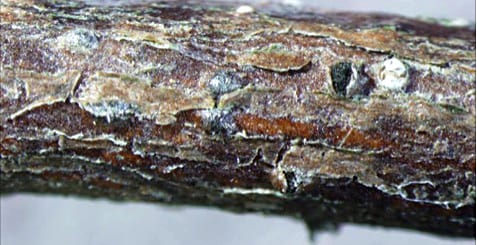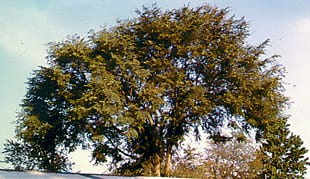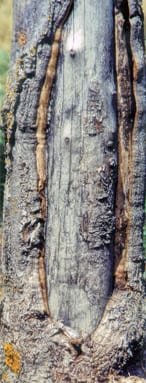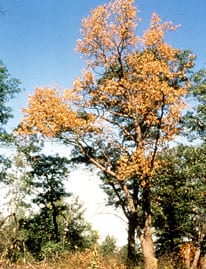All redwoods (Sequoia, Sequoiadendron, Metasequoia) are susceptible to this disease reported in California and Virginia.
Cool, damp, spring weather favors spread of spores and their germination. Hot, dry weather favors internal growth of fungus in leaf and twig tissues, hastening girdling of twigs and browning of infected portions. Phosphorus deficiency increases susceptibility of tree to infection. Trees grown out of native environment are most susceptible.
Symptoms include, needles with purple, circular or oval spots, expanding to cover entire needle, which becomes brown. Purplish brown spots at base of needle or at needle scale, becoming cankers which eventually girdle the twig. Tiny black stromata, containing perithecia or pycnidia are evident in discolored areas. Numerous cankers may develop on the twig. Once the twig is girdled, the entire distal portion dies and needles turn brown.
Spores are spread from infected leaves or twigs on live trees by rain or drip splash, during early, wet spring rains or fog. They are also dispersed by wind. Spores can penetrate the needles through stomata. Twig canker results from movement of the fungus through the leaf to the twig. Heat stress weakens resistance of tree to movement by the fungus. Overwintering in vegetative (mycelial) stage in infected tissues on the tree or in ground duff.



